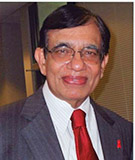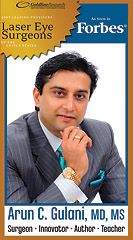
PREVENTING MEDICAL MISTAKES: PART 4 – SOME TIPS FOR YOUR SAFETY

By this time you have a good idea about the incidence and scope of medical errors that snatch so many lives unnecessarily. To prevent these mistakes, it’s important that the patients and their relatives work together with their health care team that includes not only treating physicians but also allied health professionals — the nurse practitioners, nurses, pharmacists, other therapists and admitting hospitals.
As Atul Gawande, professor of surgery, Harvard University and bestselling author, says in his ‘Check List Manifesto:’ “The modern world has given us stupendous know-how. Yet avoidable failures continue to plague us in health care … in almost every realm of organized activity. And the reason is simple: the volume and complexity of knowledge today has exceeded our ability as individuals to properly learn and deliver it to people – consistently, correctly and safely.” With more than 7,000 drugs in the market and several hundreds of medical and surgical interventions being done routinely, it’s unrealistic to expect a single doctor to master all of them. Which is the reason all patients have to be in constant communication with their health care team, ask questions, clarify doubts and be compliant with their recommendations. Here are some points to keep in mind.
Know your medications well: You must always stay on top of your prescriptions. Older people who take several drugs must realize interactions among the prescribed drugs as well as with the over – the – counter medications and vitamins you may take (often without your doctor’s knowledge) do occur and can lead to unwelcome symptoms and at times serious complications.
Ask questions to your doctor: Many patients do not take the time or forget to ask questions about their diagnosis, test results, prescriptions and life style restrictions. Often, a team of doctors are in charge of various aspects of your health, so you need to make sure they are also communicating with each other. If a special test like breast biopsy or INR – a blood test for adjusting the dose of blood thinners like warfarin – is done, you may have to call the doctor’s office for the results and act on it. Although the doctor’s assistant usually calls you with the results, there have been instances when this did not happen, resulting in major complications. Sometimes, the doctors’ offices too can be disorganized just like the rest of us and your test result may be the one that falls through the cracks. Now that Internet access is easily available, patient-physician e-mail communication may be a better way to be in touch with your physician. It’s a valuable tool in building a relationship between doctor and patient, provided security and liability risks are managed appropriately.
Pharmacists can also make mistakes: When you leave the pharmacy, make sure you are going home with the right drug with proper dosage instructions, rather than blindly trusting what is being given. And talk to the pharmacist if you want to clarify any points regarding the medicines. They are well trained in their field but not the pharmacy assistant who hands over the package. Deadly dosing errors have occurred because of inefficient or wrong labeling.
Understand the informed consent before signing: Getting “informed consent” is a routine before any procedure. But many patients may not fully understand what is involved like the extent of the surgery, possible complications and the recovery time. Often, the patient is eager to sign the paper and get it over with. But you must ask detailed questions before agreeing for any surgery, and that includes the choice of anesthesia, name of the surgeon, follow-up care, etc.
Make sure your team of doctors communicates with one another: Sometimes, the primary doctor who refers the patient to a specialist may not get the feed back/ reports in time or the report that comes back may be incomplete. This can lead to critical omissions in the treatment.
Enquire about alternative approaches: I am not talking about alternative medicine. Sometimes, costly and high-risk surgery can be avoided with less serious alternatives. One of my older patients who suffered from abdominal aortic aneurysm was recommended a “stent repair,” a less traumatic new technique but the surgeon (presumably not trained in this procedure) who gave a second opinion insisted that surgery was the best option and the patient suffered disastrous complications after the surgery!
To be continued …
M.P. Ravindra Nathan, M.D., is a cardiologist and Emeritus Editor of AAPI Journal. His book “Stories from My Heart” was recently released. (www.amazon.com or www.bn.com).
Eye Care
April is Sports Eye Safety Month

Sports-related eye injuries occur to the tune of about 100,000 events every year. One-third of these occur in children under the age of 16. Most importantly, 90 percent of these injuries could have been prevented. Any sport that involves a stick or racket, a ball or other projectile, or body contact presents a risk of serious eye injury. Existing classification systems rank sports with their risk for eye injuries as follows:
High risk: basketball, baseball and hockey;
Moderate risk: horse racing, polo, handball;
Low risk: track and field, fishing and golf.
I have suggested a modification wherein the risk level is functionally modified using the ocular status as a qualifier. Besides patients who have had structurally weakening surgeries, an emerging population of patients is those who have had LASIK. With millions of people all over the world undergoing Lasik, I have proposed a serious look into this category of “normal.” They are potentially prone to flap displacement during contact/projectile sports and can have visual consequences of the same. Thus, I would recommend that these individuals safeguard their “gift of sight” with added precautions and wear protection as a modified risk category class (per my proposed classification system).
Physicians have an obligation to warn players of potential recommend appropriate eye protection. Sports eye protection should be designed specifically for the activity or sport. Eye protection that bears the seal of sanctioned organizations should be mandated for high-risk sports. The team physician should insist that players of sports with an eye hazard wear certified protections. Non-team physicians should include a sports history as part of the routine examination of all patients and recommend protective eyewear appropriate for the patient’s activity.
The basic steps in choosing protective gear for an eye-safety program include:
- Knowing the athlete’s vision and eye history;
- Using only eye protectors that have been certified in national performance standards;
- Having professionals assist the athlete in selecting and fitting protective eyewear.
Additional recommendations
Proper fit in children is essential because some children have narrow facial features.
Protectors with clear lenses (nonprescription or prescription) should have polycarbonate lenses, the strongest lens material available. For sports requiring a face-mask or helmet, the helmet must fit properly and have a fastened chin strap for optimal protection. Contact lenses offer no protection. Therefore, athletes who wear contact lenses must also wear appropriate eye protection. Regular spectacle frames also are not adequately protective and can shatter on impact. Athletes must replace sports eye protectors that are damage or yellowed with age, because they may have become weakened. Functionally one-eyed athletes and those who have an eye injury or surgery can participate in almost all sports if they use appropriate eye protection. The exceptions are boxing, for which eye protection is not practical, and full-contact martial arts, for which protection is not allowed.
Select games and toys appropriate for the child’s age and responsibility level.
A three-point protocol
I have proposed a three-point protocol for delineating the incidence and controlling the outcome of sports-related eye injuries.
- Prevention: This can be achieved in a three-step program of education: effective role modeling with adults setting a good example for children by always wearing protective eyewear while using power tools, rotary mowers, line lawn trimmers, or hammering on metal; and strict adherence to approved equipment.
- Recognition: Early recognition and high index of suspicion is a must since the seriousness of sports-related injuries may not be immediately obvious. These injuries can be devastating in terms of their spectrum of damage with pain, loss of function, and long-term disability.
- Management: Finally, effective management by an ophthalmologist may involve corrective- administrators, and physicians are genuinely concerned about making sports as safe as possible while still maintaining fun and appeal. In Canada, ocular trauma decreased by 50 percent after certified full-face protectors attached to the headgear were made mandatory in organized amateur hockey. Thus, sports related eye injuries are indeed preventable and the incorporation of the above suggested protocols will lead to a harmonious outcome. After all, isn’t that what sports is all about!
Arun C. Gulani, M.D., M.S., is director and chief surgeon of Gulani Vision Institute in Jacksonville. He can be reached at [email protected] or visit www.gulanivision.com